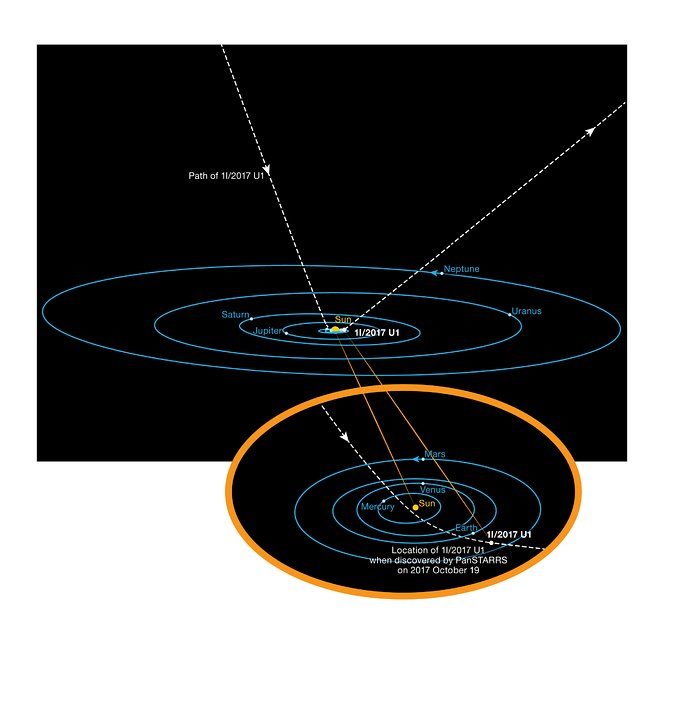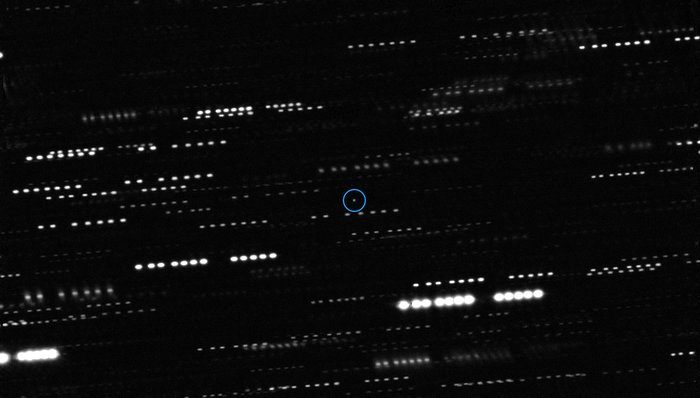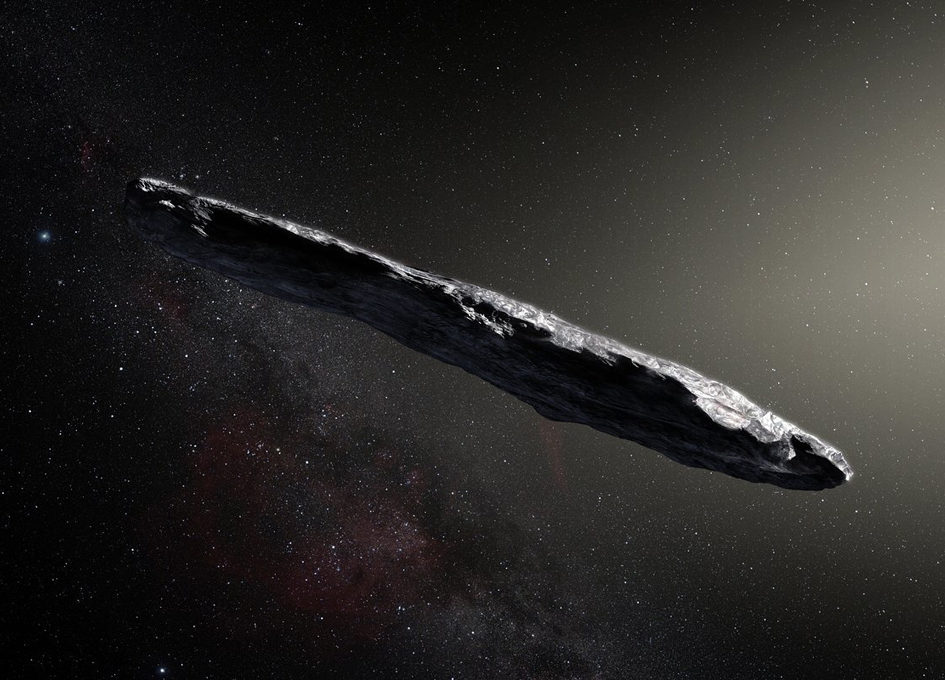On 19 October 2017, the Pan-STARRS 1 telescope in Hawaii picked up a faint point of light moving across the sky. It initially looked like a typical fast-moving small asteroid, but additional observations over the next couple of days allowed its orbit to be computed fairly accurately. The orbit calculations revealed beyond any doubt that this body did not originate from inside the Solar System, like all other asteroids or comets ever observed, but instead had come from interstellar space. Although originally classified as a comet, observations from ESO and elsewhere revealed no signs of cometary activity after it passed closest to the Sun in September 2017. The object was reclassified as an interstellar asteroid and named 1I/2017 U1 ('Oumuamua).

"We had to act quickly," explains team member Olivier Hainaut from ESO in Garching, Germany. "'Oumuamua had already passed its closest point to the Sun and was heading back into interstellar space."
ESO's Very Large Telescope was immediately called into action to measure the object's orbit, brightness and colour more accurately than smaller telescopes could achieve. Speed was vital as 'Oumuamua was rapidly fading as it headed away from the Sun and past the Earth's orbit, on its way out of the Solar System. There were more surprises to come.

Karen Meech explains the significance: "This unusually large variation in brightness means that the object is highly elongated: about ten times as long as it is wide, with a complex, convoluted shape. We also found that it has a dark red colour, similar to objects in the outer Solar System, and confirmed that it is completely inert, without the faintest hint of dust around it."
These properties suggest that 'Oumuamua is dense, possibly rocky or with high metal content, lacks significant amounts of water or ice, and that its surface is now dark and reddened due to the effects of irradiation from cosmic rays over millions of years. It is estimated to be at least 400 metres long.
Preliminary orbital calculations suggested that the object had come from the approximate direction of the bright star Vega, in the northern constellation of Lyra. However, even travelling at a breakneck speed of about 95 000 kilometres/hour, it took so long for the interstellar object to make the journey to our Solar System that Vega was not near that position when the asteroid was there about 300 000 years ago. 'Oumuamua may well have been wandering through the Milky Way, unattached to any star system, for hundreds of millions of years before its chance encounter with the Solar System.
Astronomers estimate that an interstellar asteroid similar to 'Oumuamua passes through the inner Solar System about once per year, but they are faint and hard to spot so have been missed until now. It is only recently that survey telescopes, such as Pan-STARRS, are powerful enough to have a chance to discover them.
"We are continuing to observe this unique object," concludes Olivier Hainaut, "and we hope to more accurately pin down where it came from and where it is going next on its tour of the galaxy. And now that we have found the first interstellar rock, we are getting ready for the next ones!"
Notes
The Pan-STARRS team's proposal to name the interstellar objet was accepted by the International Astronomical Union, which is responsible for granting official names to bodies in the Solar System and beyond. The IAU also created a new class of objects for interstellar asteroids, with this object being the first to receive this designation. The correct forms for referring to this object are now: 1I, 1I/2017 U1, 1I/'Oumuamua and 1I/2017 U1 ('Oumuamua). Note that the character before the O is an okina. So, the name should sound like H O u mu a mu a. Before the introduction of the new scheme, the object was referred to as A/2017 U1.
The name is Hawaiian and more details are given here:
...the object A/2017 U1 receives the permanent designation 1I and the name ʻOumuamua. The name, which was chosen by the Pan-STARRS team, is of Hawaiian origin and reflects the way this object is like a scout or messenger sent from the distant past to reach out to us (ʻou means reach out for, and mua, with the second mua placing emphasis, means first, in advance of). Correct forms for referring to this object are therefore: 1I; 1I/2017 U1; 1I/ʻOumuamua; and 1I/2017 U1 (ʻOumuamua).




Comment: Research paper: "A brief visit from a red and extremely elongated interstellar asteroid", by K. Meech et al., to appear in the journal Nature on 20 November 2017.